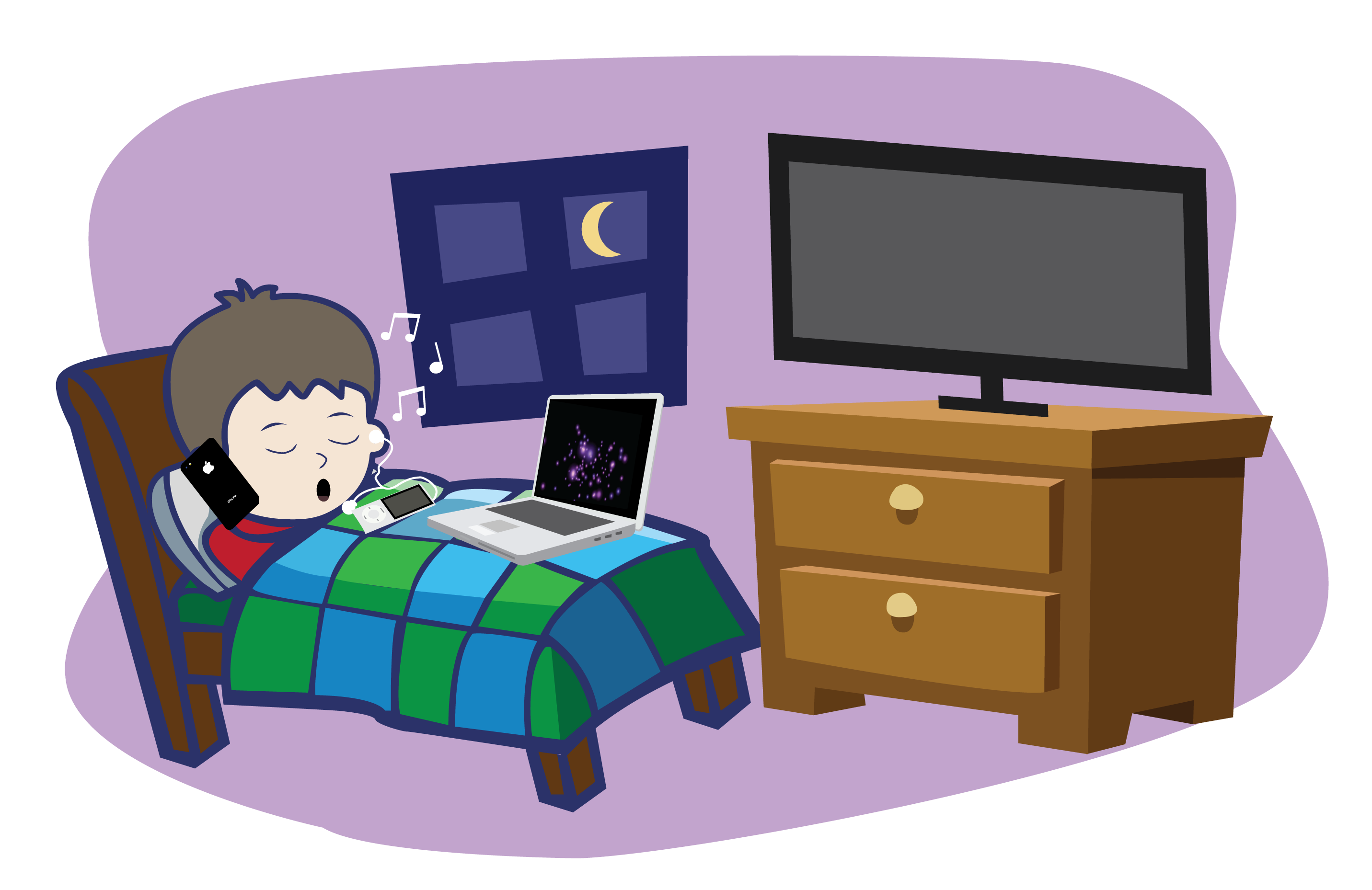Sleep deprivation has increased in the last 50 years. Aside from an the abundance of caffeine in our daily diets, the likely offenders are
the technological advancements since this date. The exponential increase of electronic technology is exciting yet simultaneously disturbing. With smartphones, computers, video games, high definition televisions and iPods, access to stimulation is overwhelming. Current studies are focusing on the addiction to media and this obsession can lead to a decrease in time set aside for sleep and exercise.
Douglas Cane, a psychologist at the outpatient rehabilitation clinic in Halifax, N.S., suggests that, besides the possible risk of cancer, electronic technology itself does not cause health problems. It does however influence a person’s behaviour which, in turn, affects their health.
Sleep deprivation is a major factor in maintaining good health. Cane told The Concordian that the fixation on cell phone use, gaming and other tech habits extends people’s waking hours, and decreases the allotted time for sleep.
“This is an extension of an ongoing problem where technological advances, electric lights, television, cell phones, [and the] Internet, have reduced the amount of time we are willing to devote to sleep,” says Cane. “Since our biological need for sleep has not changed, we are left with a society that is chronically sleep deprived.”
According to the National Sleep Foundation’s 2011 Sleep in America poll, there is a clear correlation between sleeping problems and the use of electronics during, what is meant to be, your downtime.
After surveying a random sample of 1,508 Americans between the ages of 13 and 64, 63 per cent of the participants stated they were not getting a good night’s sleep on weeknights, while a whopping 95 per cent admitted to using technology in the hours before bedtime most nights during the week. These nightly habits of surfing the web, texting, emailing and vegging in the front of the television are robbing us of our sleep.
According to Dr. Charles Czeisler of the Division of Sleep Medicine at Harvard Medical School, the brain needs about two to three hours of downtime before sleep in order to be prepared. Artificial light affects the production of melatonin which is the sleep hormone. Light-emitting screens from gaming, texting, and television enhances alertness, which can contribute not only to the lack of sleep, but the quality of bedtime rest as well.
Cane suggests that mood disturbances, difficulties regulating weight, suppressed immune responses, difficulties learning and processing new information, and increased rates of accidents have all been linked to sleep deprivation. A recent study by the AAA Foundation for Traffic Safety found that one in seven American licensed drivers between the ages of 16 and 24 admitted to falling asleep on the road at least once in the past year.
“It’s all about making sleep a priority by devoting a period of time for sleep and respecting that period of time by eliminating competing activities,” advises Cane.
With exams around the corner, it can be tempting to fall asleep on our laptop and coat our keyboard with drool. It is necessary to make effort for the sake of our health and take the occasional nightly break from our technological buddies.
